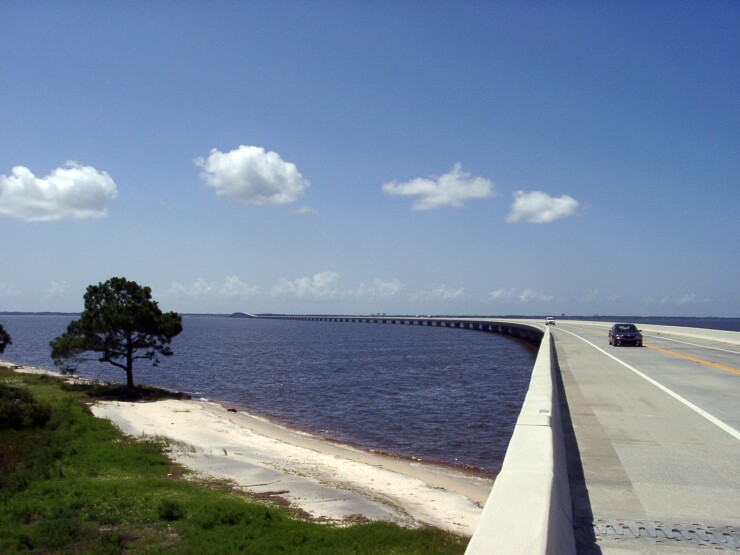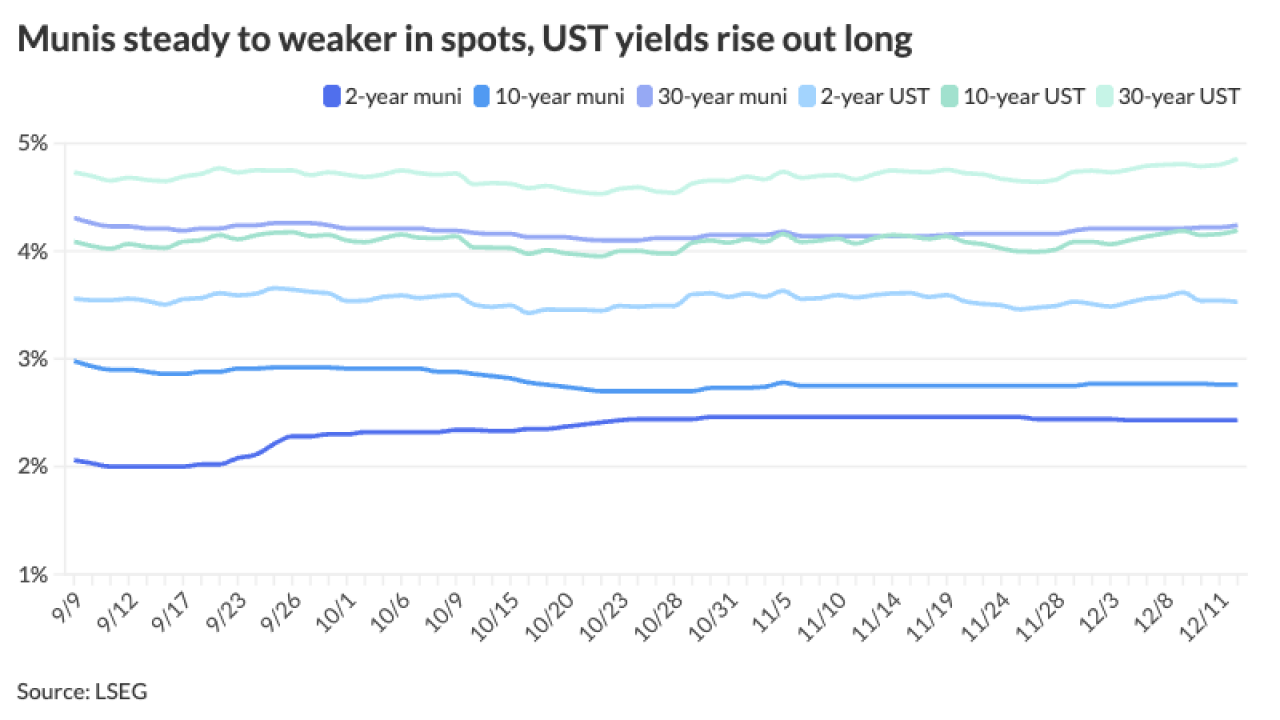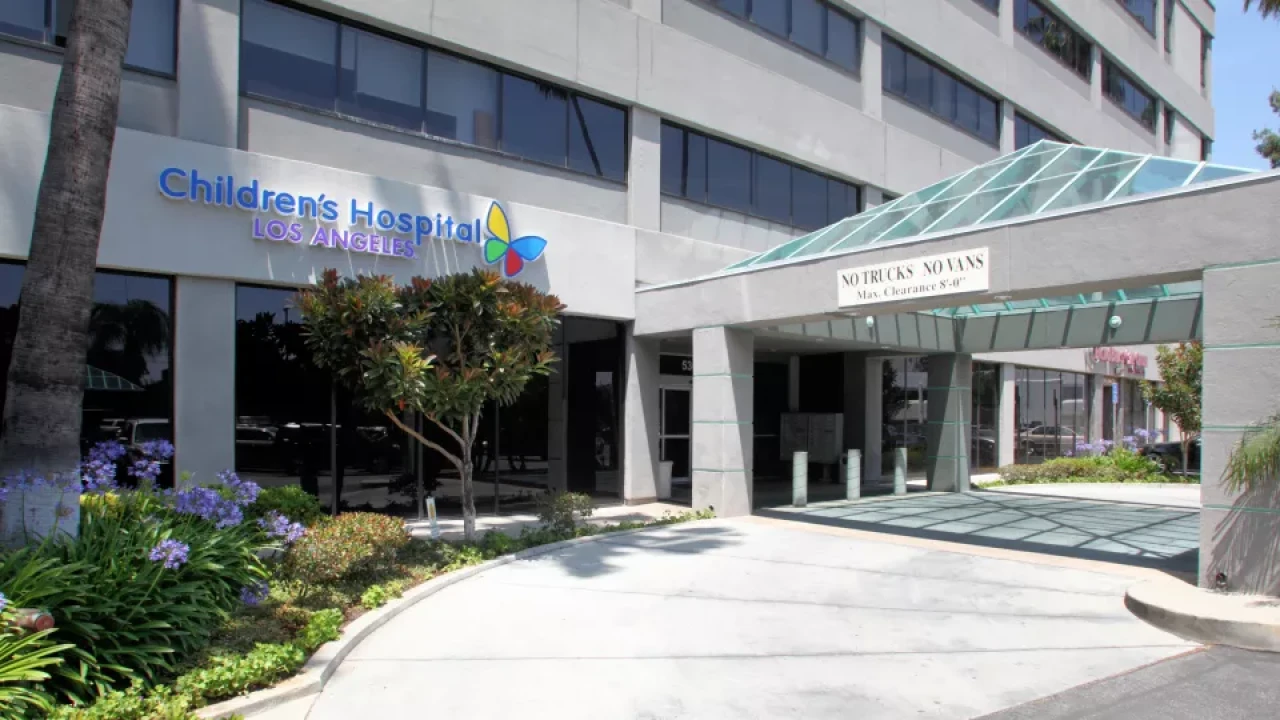The trustee for the Garcon Point toll bridge sued the Florida Department of Transportation for refusing to raise tolls since the debt went into default in 2012.
UMB Bank NA asked a court Thursday to order FDOT to raise the tolls and to pay it more than $75 million in damages.

The damage amount reflects what UMB said it believes are upward toll adjustments that could have been implemented since the first default, according to
UMB contends that FDOT and the Santa Rosa Bay Bridge Authority, which issued the bonds in 1996, refused to raise tolls after a series of requests were made.
“After utilizing and benefiting from the significant construction funding made available by the bondholders, the authority and FDOT each intentionally engaged in bad faith conduct designed to prevent the bondholders from adjusting the tolls,” the complaint said.
FDOT said Friday that it recently received the lawsuit and is in the process of reviewing it.
“The department believes it has and continues to fulfill its obligations, including paying all costs and maintenance of the bridge,” said spokesman Tom Yu.
FDOT, which commissioned a traffic and revenue study in June, did not answer questions about why the study was done or if it planned to recommend to the Legislature in next year’s session that the bridge bonds be refinanced, restructured or taken out in a negotiated deal.
UMB’s lawsuit follows an attempt earlier this year by two Florida lawmakers to address the Garcon Point Bridge's defaulted bonds.
During the 2018 legislative session, Rep. Jayer Williamson, R-Pace, and Sen. Doug Broxson, R-Pensacola, sponsored bills to take out the bonds. Neither measure reached their respective floors for a vote. The lawmakers reportedly are planning to file new bills for the 2019 session that begins in March.
About $135 million of debt is outstanding on the northwest Florida span.
The Santa Rosa Bay Bridge Authority board, which hasn’t existed for years because board appointments weren’t made by Gov. Rick Scott, declined to follow rate covenants and raise tolls in part because members believed local residents would balk at the cost and use competing nearby free roadways.
The first bridge trustee, Bank of New York Mellon, wrote to the FDOT in March 2015 requesting the agency raise tolls. The bank claimed that FDOT’s lease-purchase agreement with the authority for bridge maintenance also required the department to establish and collect tolls.
The FDOT disputed the trustee’s interpretation of the agreement.
“The department generally has no legal right, or ability, to set tolls on behalf of the authority, therefore, it is not clear to the department that it has any authority to comply with your request,” Tom Thomas, FDOT's general legal counsel, wrote to BNY Mellon in May 2015.
BNY Mellon threatened to file a complaint the same year in an attempt to force an increase in the tolls, but the suit wasn’t pursued.
UMB Bank became the successor trustee in August 2016.
In its lawsuit, UMB contends that for the benefit of bondholders the lease-purchase agreement states that FDOT “shall establish and collect tolls” if the bridge authority is not setting tolls in accordance with the rate covenant and bond resolution.
“This was an intentionally-created backup mechanism…to protect the bondholders in the event the authority failed for any reason to discharge its obligations,” the suit said. “This was another material inducement offered by the legislature and the authority – including the ‘step-in’ contractual obligation of FDOT to set tolls – upon which the bondholders relied in purchasing the bonds.”
The 3.5-mile, two lane Garcon Point Bridge opened in 1999, after the bridge authority issued $75.5 million of fixed, current-interest bonds and $19.5 million of capital appreciation bonds to finance its construction. Toll collections never met consultants’ projections and when reserves were exhausted the debt went into default.
The trustee accelerated the bonds on Jan. 1, 2013, declaring all principal immediately payable. Interest continues to accrue. A study earlier this year estimated that it will not be until 2064 that the debt is paid off under the current rate of toll collections. The bonds were originally issued with final maturity in 2028 — a 32-year life.
As of July 1, 2018, about $134.9 million of bonds were outstanding, and the debt continues to grow at a rate of $6.8 million a year, UMB's complaint said.
FDOT hired the CDM Smith consulting firm this summer to do a comprehensive 30-year traffic and revenue study on the Garcon Point toll bridge.
The CDM study said the FDOT requested it “to examine the viability of potentially acquiring the bridge and making it part of the Florida's Turnpike Enterprise.”
A previous report already looked at that option. In December 2017, the Florida Division of Bond Finance released a feasibility study of how the default could be remedied.
The study discussed the pros and cons of maintaining the bridge’s status quo, using tender offers or issuing bonds through the Florida Turnpike to buy the bridge from bondholders at a negotiated price. Officials said an offer would have resulted in bondholders taking haircuts of between 27% and 45.5%.
The study also said if the state did nothing, “FDOT will likely be sued by the bond trustee in an effort to force an increase in the toll rates on the bridge. The resulting litigation will likely be time consuming and expensive.”





